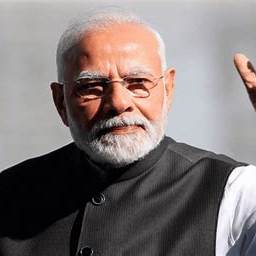Prime Minister Narendra Modi is scheduled to meet U.S. President Donald Trump this week in Washington, D.C. This high-profile visit aims to enhance the strategic partnership between India and the United States, focusing on trade relations, defense cooperation, and economic stability.
Trade Relations and Tariff Reductions One of the most critical discussions will revolve around reducing tariffs to facilitate smoother trade between the two nations. India is considering lowering tariffs on various American products, including electronic goods, medical devices, and surgical equipment. This move aligns with India’s domestic production goals while addressing U.S. concerns about trade imbalances.
The backdrop to these discussions includes recent tensions regarding trade policies, as President Trump has introduced new tariff measures aimed at reshaping global trade. By proactively negotiating reduced tariffs, India seeks to prevent a trade conflict similar to the ongoing tensions between the U.S. and China.
Defense Cooperation and Strategic Partnerships
Apart from trade, defense collaboration remains a key focus of Modi's visit. India has long sought to diversify its defense partnerships, reducing reliance on traditional suppliers like Russia. In this visit, discussions will include potential agreements for purchasing and co-producing military equipment with the United States.India is in talks to co-produce Stryker combat vehicles with General Dynamics and finalize a deal for fighter jet engines in collaboration with Hindustan Aeronautics Limited (HAL) and General Electric. This agreement is expected to strengthen India’s defense capabilities while enhancing U.S.-India military ties.
Economic Implications and Market Reactions The anticipation surrounding Modi’s visit has already impacted financial markets. The Indian rupee has faced pressure due to concerns about potential tariff hikes and expectations of domestic interest rate cuts. Recently, the rupee dropped significantly, driven by fears of a global trade war and foreign investment outflows.
Market analysts are closely monitoring the outcomes of Modi's discussions with Trump, as any changes in trade or defense agreements will have long-term consequences for India’s economic stability. A favorable agreement on tariffs and defense deals could boost investor confidence, while any trade disputes could lead to further currency depreciation.Immigration and Bilateral Relations
Another significant topic likely to be discussed is immigration policy. Recently, a flight from Texas arrived in Amritsar, carrying Indian immigrants who were deported from the United States. This marks the beginning of a broader U.S. effort to return illegal immigrants to their home countries.
President Trump sees this as a victory in his efforts to tighten immigration laws, while Prime Minister Modi has agreed to cooperate by allowing the return of undocumented Indian immigrants. This issue highlights the complexity of U.S.-India relations, where strategic collaboration must be balanced with domestic political considerations.
Prime Minister Modi's visit to the United States is expected to be a defining moment in bilateral relations. With major discussions on trade, defense, and immigration, the outcomes of this visit will likely shape the future of the partnership between the world's two largest democracies. Strengthened trade ties, defense agreements, and economic stability will be crucial in determining the long-term trajectory of U.S.-India relations.
